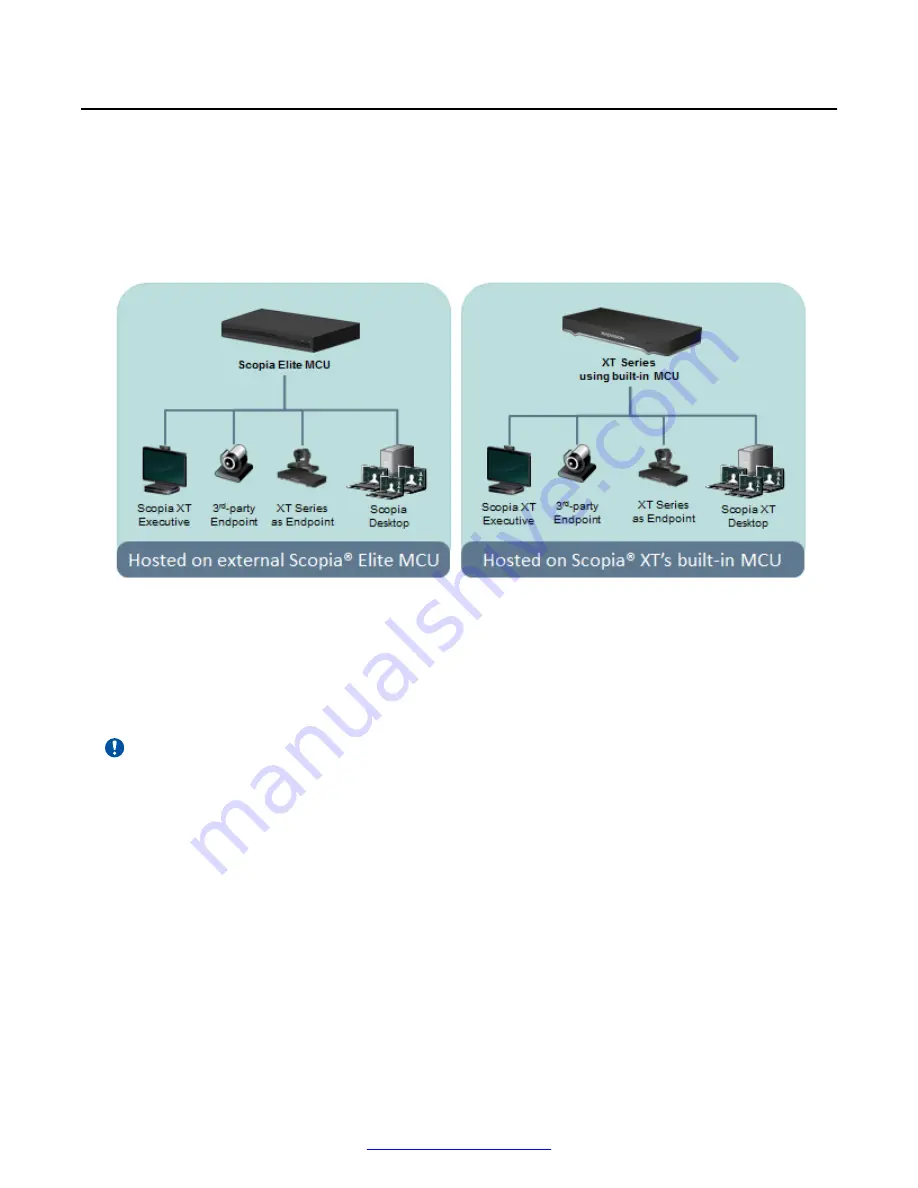
About the Built-In MCU
You can use your Avaya Scopia
®
XT Series to join a videoconference hosted on an external MCU,
like the Scopia
®
Elite MCU, or you can host a meeting on the built-in MCU if available.
An MCU, or Multipoint Control Unit, connects several endpoints to a single videoconference. It
manages the audio mixing and creates the video layouts, adjusting the output to suit each
endpoint's capabilities.
Figure 8: Hosting a videoconference on the XT Series
You can add a license to most XT Series models to activate the built-in MCU to host
videoconferences locally (see
Deployment Guide for Avaya Scopia
®
XT Series
):
• MCU4 can host videoconferences with up to four participants (one local, three remote).
• MCU9 can host videoconferences with up to nine participants (one local, eight remote).
Important:
The Scopia
®
XT Executive and Avaya Scopia
®
XT4300 can host up to four participants.
The embedded MCU can mix standard definition and HD endpoints in the same meeting, without
one impacting on the other. The built-in MCU also supports both wide-screen (16:9) and standard
formats (4:3), incorporating them seamlessly into the video layout.
While generating the video layout, the built-in MCU must shrink each participant's image to fit the
layout. So while the composite video layout remains in HD, each participant's image within the
layout can reach a maximum resolution of 448p.
When using the XT Series as an MCU only, not participating locally, we recommend blocking the
audio and video input from this XT Series during the meeting.
For the best experience when using the Avaya Scopia
®
XT Series MCU Edition, we recommend
activating the license known as High Bandwidth Option (12Mbps total for all participants) to avoid
About the Built-In MCU
April 2015
Avaya Scopia
®
XT Series User Guide
15






























